10 New York's Most Important Buildings Built Over the Last Decade
'30.11.2019'
Source: ny.curbed.com
The construction boom that has lasted in New York for the past decade has become a great breeding ground for thousands of new buildings. About the main of them, who transformed everything around with their appearance, it is said in the publication of the publication Curbed.
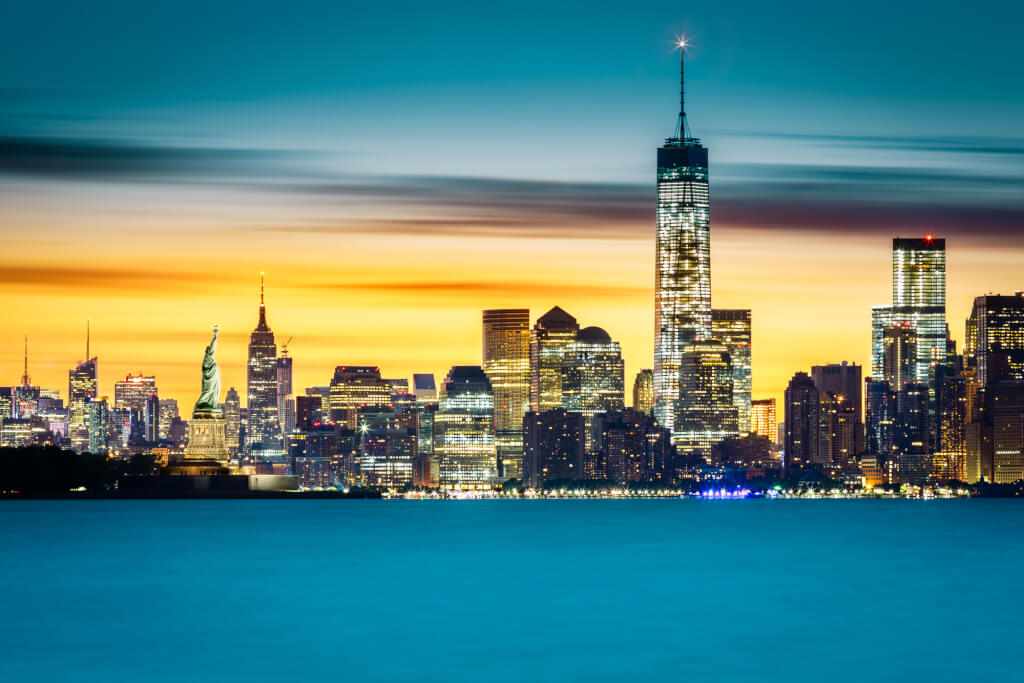
Many of these buildings are rather modest, and therefore often do not attract attention. However, there are such buildings in the city, after the construction of which the area around was transformed beyond recognition.
So, in Manhattan, skyscrapers began to prevail on the horizon (from One57 to Hudson Yards). The World Trade Center, which at the end of the 2009 year was a big hole in the earth, has again become a busy center. And the remote areas of Long Island City and Downtown Brooklyn have experienced their own boom, the newspaper notes.
Below is a list of 10 locations (nine buildings and one park) that were built over the past decades, fundamentally transforming New York.
World Trade Center
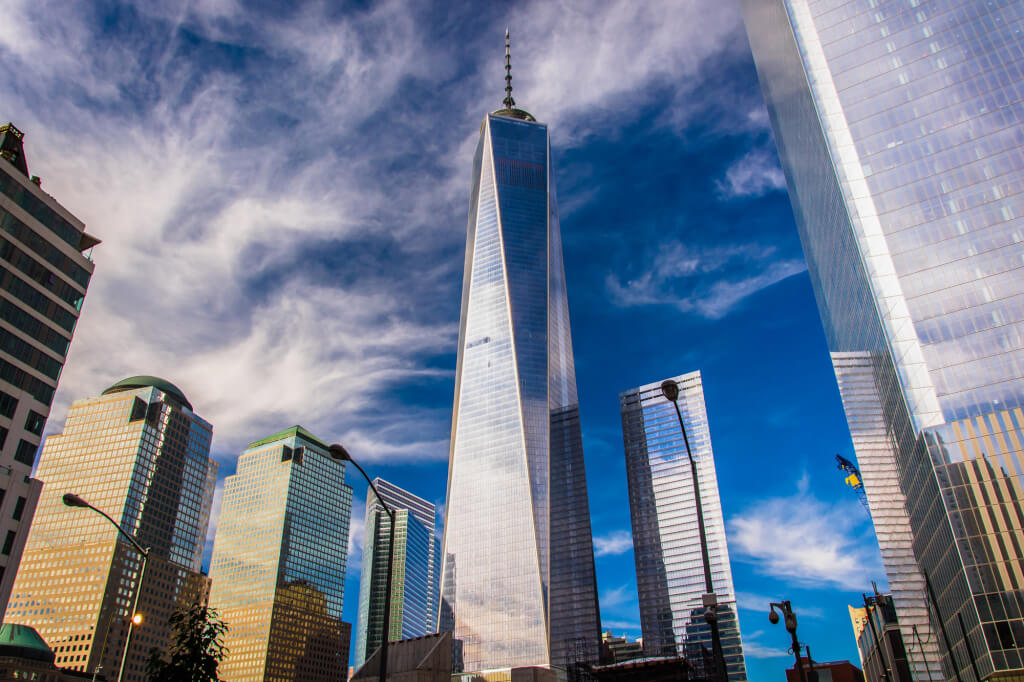
No one would call this building the best built in the last decade. However, it is certainly the most symbolic.
The design of the tower began immediately after the attacks of September 11. But only in 2014, after financial and bureaucratic delays, as well as a change of architect and approval of the final project, the building accepted the first tenants.
Designed by David Childs of Skidmore, Owings & Merrill, it is a gleaming glass lighthouse that rises 541 meters (or 1776 feet, which is the symbolic number).
Maybe not everyone likes this building, but it certainly has become a symbol of the rebirth of New York after the events of 11 September. Now his image can be found on T-shirts, Lego designer and various souvenirs.
Oculus
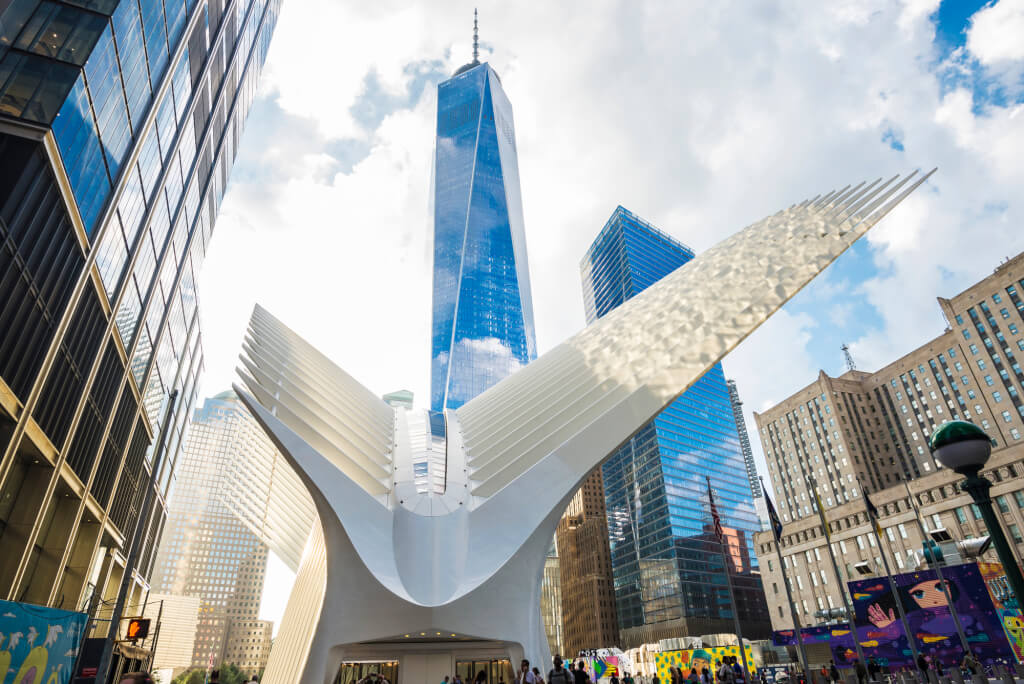
Like the One World Trade Center, the design was conceived by the architect Santiago Calatrava as another symbol of the revival of the city. But due to its exorbitant cost ($ 4 billion) and ten-year delays, it has become "one of the political jokes."
It’s hard not to feel awed when you go inside. And this awe is enhanced by upscale stores located on both sides of the atrium and its digital displays.
The building was opened just three years ago, and time will tell whether it will be remembered as something insignificant or, on the contrary, as an important civic achievement.
One57
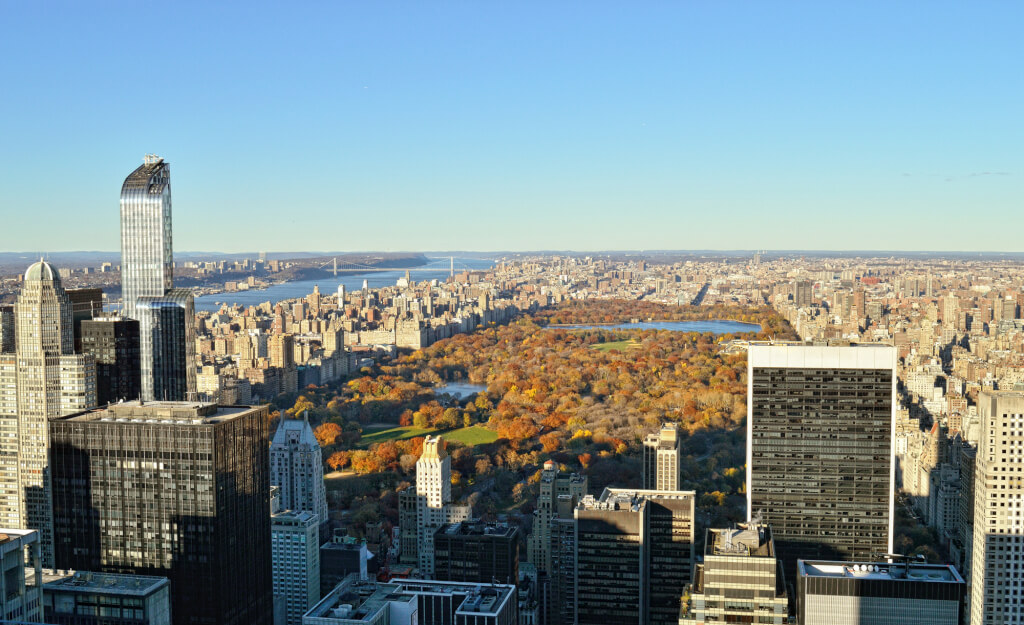
Soon after the start of sales in 2011, many international buyers became interested in Gary Barnett's skyscraper. It set record after record, becoming the most expensive building in terms of price per square meter.
It also became a symbol of growing inequality between rich and poor New Yorkers, as well as an oversupply of the real estate market, which prompted foreign buyers.
Around this building, designed by Pritzker Prize winner Christian de Portzamparc, many more elegant buildings have since been built, but it has always been the first.
432 Park Avenue
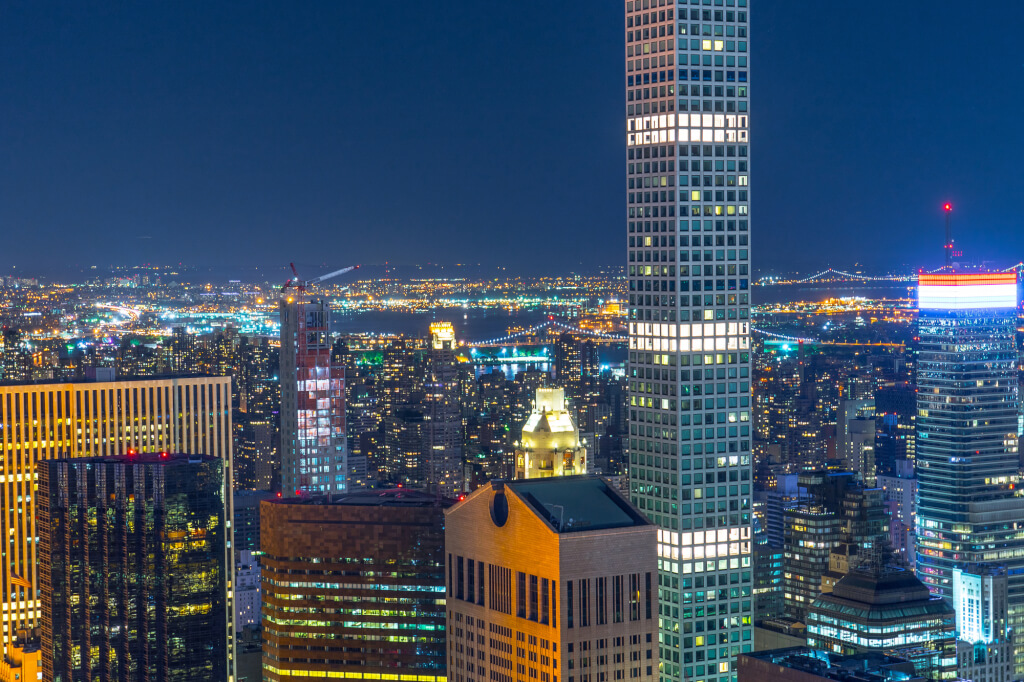
Like One57, Rafael Vignoli’s 432 Park Avenue, which was completed in 2015, was widely condemned by categorizing it as “New York City Property in the 21st Century, which is Wrong.”
This grandiose building rises above neighboring buildings due to its height of 427 meters. Until recently, it was the tallest residential building in the world. The apartments here are unusually expensive - a three-room apartment was sold for $ 91,1 million in 2017 year.
But, unlike One57, Vignoli’s creation is actually quite elegant - with its concrete facade and a number of symmetrical windows located along the entire length of the building.
The structure is still controversial, but its status as a skyscraper is undeniable.
DSNY Salt Shed
This Spring Street building was built in collaboration with Dattner Architects and WXY. Its concrete structure fits perfectly into the urban design.
It is also a rare civilian building built this decade, unique and eye-catching, not dull and boring, or, worse, not functional.
He recalled that the recently opened Hunters Points Library in Queens, which had taken more than 10 years to build, is today heavily criticized because of its inaccessibility to people with disabilities.
Via Verde
Like DSNY Salt Shed on Spring Street, this low-cost housing complex is somewhat more modest than some of the other buildings on this list.
The project, developed by Dattner Architects and Grimshaw, accommodates over 200 apartments designed for low- and middle-income New Yorkers. It is located in the South Bronx - an area that is not usually found on the list of the best in terms of architecture.
The significance of Via Verde is that developers do not have to choose between form or function when it comes to affordable housing.
On the subject: 5 New York Buildings That Cool America's History
The name of the project, which translates as the “green path”, indicates its ambition: the focus is on the vast courtyard, and the green roofs, fitness center and much more are built for the comfort of residents.
It is noted that the project was implemented, focusing on public reviews about what people lacked in their housing.
It is a rather simple but beautiful building with large windows and a facade decorated with dotted colored inserts.
56 Leonard
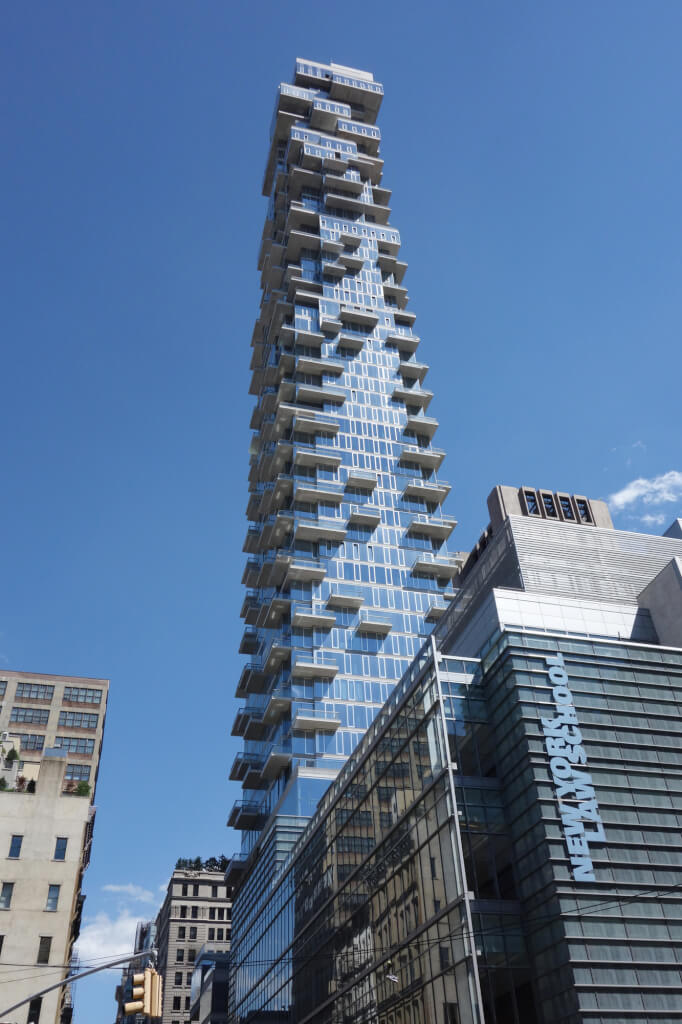
This building resembles a pile of glass. It was built by Herzog & de Meuron's Jenga-like company. The project was first presented in 2007. But already in 2008, construction stalled - it seemed that it would never end. It was renewed only in 2013.
Now that the tower is completed, it has reached its climax in 2015 and welcomed the first inhabitants two years later - it is difficult to imagine the outlines without its wild, asymmetric shape, especially among the more sedate new buildings that appeared in lower Manhattan.
The High Line Park
It is impossible to imagine a structure capable of more thoroughly changing the architectural environment of New York over the past ten years than High Line.
The first section, extending from Hanseworth to 20 West, opened in 2009. But only after years it became clear what impact this park has on tourism, real estate and the popularity of such a public space.
Today, more than 7 million people visit this place every year to stroll through the more than 2-kilometer High Line space.
With the advent of the masses of people, a boom in the elite apartment market began, which led to the emergence in West Chelsea of many apartments worth millions of dollars.
In the end, the influx of tourists and the growth in the number of elite real estate raised the question of for whom this space was actually created. The founders of the building hope to find an answer in the next decade.
Via Xnumx West
For a while, the Danish architect Bjarke Ingels seemed to be everywhere. He attracted attention thanks to the second project of the World Trade Center and entered the 100 list of the most influential people.
But in New York, his main achievement so far has been what architects call the courtscraper.
This is Via 57 West - a structure that rises like a shining beacon at the end of 57 West Street. The building, according to Ingels, is conceived as "a hybrid, something between the European bloc and the traditional high-rise building of Manhattan." Inside the building there is even a Danish-style patio with a sloping glass and metal facade.
“Whether you like it or not, there is no other building in New York that looks like this,” the author assures.
Barclays Center
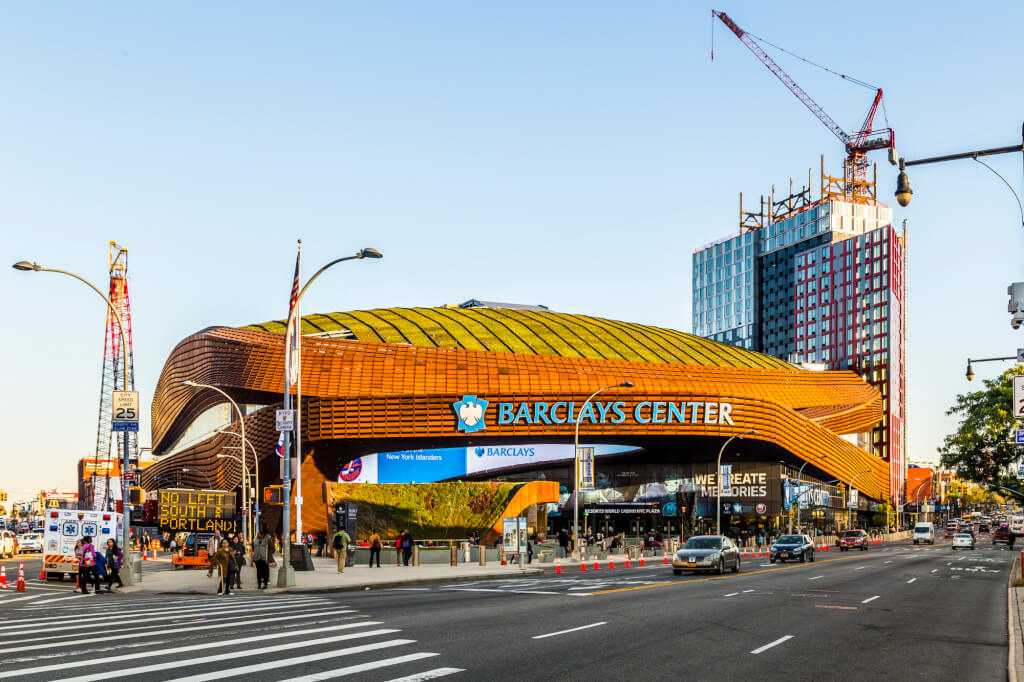
When the new Brooklyn Nets Stadium opened on the corner of Flatbush and Atlantic Avenue in 2012, to some extent this was the culmination of the 55 summer program to move the arena into the neighborhood.
The stadium was first proposed for construction in 1955 by former Brooklyn Dodgers manager Walter O'Malley. In 1957, there was a battle for this project with Robert Moses - he chose to place a stadium in the Flushing area, Brooklyn. The conflict ended with the Dodgers relocating to Los Angeles.
In 2009, Geri’s design was completely written off, and SHoP7 took over the construction. Today we can see the end result of their work: a curved structure, previously coated with steel resistant to atmospheric corrosion. This marked the beginning of a new era for Brooklyn, for better or for worse.







